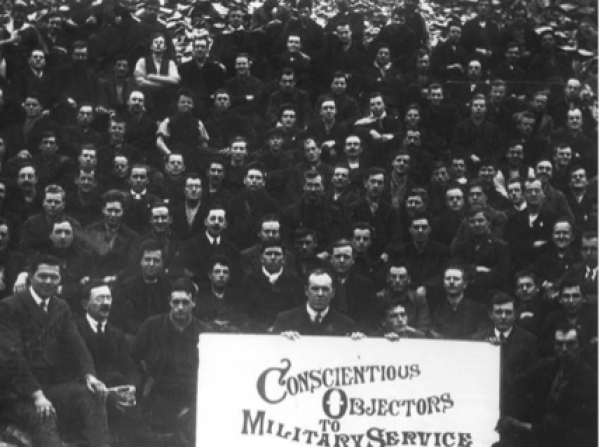Anti-Conscription During World War One
What actions were undertaken by those involved in the movements against conscription of men as soldiers?
Religious objectors would not serve in the Army Service Unit or Medical Corps during the war while refusing to wear uniforms for non-combatant roles. 73 conscientious objectors had been exempted for religious reasons but in Trentham Military Camp, 15 religious objectors refused to do any work or wear uniforms. They were sentenced to two years imprisonment with hard labour. The Labour Party leaders were imprisoned for sedition. They held resistance to authority which caused disruption in the government. By the end of the First World War in 1918, 287 men had been charged with sedition, 208 convicted and 71 had been sent to prison.What were the social and political features of the protests during the First World War?
War was seen as a method in which the rich advanced their interests and gained wealth.
Conscription lead to the exploitation of working class men at the front line.
Censorship regulations limited freedom of speech.
Charges of sedition led to imprisonment for other local labour workers was a result of the conscription that they opposed.
The government responded to the worker’s threats to strike with war regulations that defined the sedition.
This included, inciting disaffection, disorder and class hostility, interfering with recruitment and the production of essential goods.
This topic was researched by Rochelle Schuller, Tatjana Gojack, Amelia Lewis, Jodi Norris, Amelia Clarke, Brittany Caldwell and Rebecca Jost.
We will now continue to research further into this topic.
Read 8456 times
Tagged under
Latest from Soldiersandorder NZ-FR
- Shared Histories exhibition posters in Wellington
- Prime Minister John Key with Baradene College Students and Shared Histories exhibition.
- Shared Histories exhibition Opening in Wellington. Baradene College students Olivia Mendonca and Genevieve Bowler with the Governor-General of New Zealand, Sir Jerry Mateparae.
- Our project makes it to Elizabeth II Pukeahu Education Centre [Wellington] launch - wow
- Project becomes an e-book at Auckland Libraries!
Related items
Media
Login to post comments
